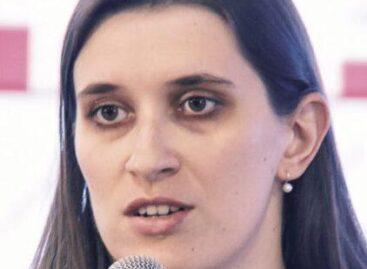Consumption is the gas pedal, industry is the brake: will there be a smooth landing in 2026?
At the Business Days conference Dr Ákos Kozák, co-founder and director of economic research at the Equilibrium Institute began his presentation with a historical overview: although Hungary’s GDP has doubled since 1992, it still lags behind the other Visegrád countries.
This article is available for reading in Trade magazin 2025/11.

Dr. Ákos Kozák
co-founder,
director of economic
research
Equilibrium Institute
In terms of purchasing power parity, in 2024 Hungary stood at 77% of the EU average, while the Czech Republic was at 92%, Poland stood at 79% and Slovakia was at 75%. As for the inflation, Hungary’s performance is particularly weak: between 2000 and 2024 prices surged by 220% vs. an EU average of 78%. Employment grew from 62% to 78%, but labour productivity increased by only 63% since 1995.
Current situation: a steep landing
In the second quarter of 2025 the Hungarian economy remained on a “near-stagnant” trajectory: growth was roughly +0.2% on an annual basis and +0.4% on a quarterly basis, while consumption was the main driver of growth in 2024 and in the first half of 2025. In contrast, industry has been in a double-digit decline since its peak in 2022 (year-on-year decline in June 2025), which is also reflected in exports. Investment has been weakening steadily since 2022: the GDP ratio will fall from around 28% in 2022 to around 22% in 2025. Although retail sales grew by approximately 3.3% year-on-year in the second quarter of 2025, they are still about 27 percentage points below the pre-crisis trend.
Inflation and wages – a double squeeze
In July 2025 the inflation was at 4.3%, which is higher than the regional and EU averages. The rise in prices is primarily fuelled by household energy and heating (year-on-year +10.9%), with food, alcoholic beverages, tobacco products and services also contributing to the upward pressure. Household inflation expectations continue to be way higher than the actual data. Wages rose by 8-10% in the first half of 2025, leading to an increase in real earnings. At the same time the gap between wage dynamics and productivity continues to widen: since 2019 real wages have augmented by ≈+19%, while labour productivity per capita has moved up only ≈+4% – this represents a persistent cost pressure for employers and an inflation risk for the economy as a whole. According to the baseline scenario of the Equilibrium Institute, a 0.3% growth is expected in 2025, followed by +2.4-2.6% in 2026. Growth will be driven mainly by household consumption.
New growth model – “no option B”
Recalibrating the trajectory is a task for both businesses and the state. According to Dr Ákos Kozák, the upper limit of support policy should be set at 1.5% of GDP and funding should be linked to performance: money should go to companies and projects that measurably increase productivity and domestic added value. The key to SME growth is to encourage mergers and acquisitions and to offer organised support for managing generational change; the focus of economic policy should be on Hungarian-owned medium-sized and large companies. In attracting foreign capital, the emphasis is shifting to supplier-based FDI incentives. Whatever direction political life will take in April 2026, the room for manoeuvre is limited: the pace of EU funding inflows and the ramp-up of new mobility industry capacities set the boundaries. By 2026 near-zero growth will no longer be acceptable.
Related news
Business Days elective course: a weekend programme establishing a new tradition
🎧 Hallgasd a cikket: Lejátszás Szünet Folytatás Leállítás Nyelv: Auto…
Read more >The secret currencies of loyalty
🎧 Hallgasd a cikket: Lejátszás Szünet Folytatás Leállítás Nyelv: Auto…
Read more >Winners of the 2025 Retailer of the Year award announced
🎧 Hallgasd a cikket: Lejátszás Szünet Folytatás Leállítás Nyelv: Auto…
Read more >Related news
How do young adults celebrate?
🎧 Hallgasd a cikket: Lejátszás Szünet Folytatás Leállítás Nyelv: Auto…
Read more >Vajda-Papír celebrates Ooops!’s 15th anniversary with a hybrid AI campaign
🎧 Hallgasd a cikket: Lejátszás Szünet Folytatás Leállítás Nyelv: Auto…
Read more >Pre-holiday shopping at up to half price
🎧 Hallgasd a cikket: Lejátszás Szünet Folytatás Leállítás Nyelv: Auto…
Read more >






